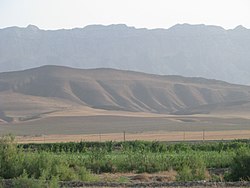Since I travel a lot, I pay close attention to getting the best airline seat that I can. It can make a big difference in onboard comfort.
In part one I stated there are at least as many aisle seats as window seats, and gave some common seat preferences. In this post I introduce some basic maths and pyschology and explain how I select seats on every different seat layout.
First some assumptions.
- I assume you are travelling alone. Travelling with someone else complicates seat selections. Please check the next posts if you are flying with 1 or more others.
- I assume that you are not a wierdo who loves middles seats, and so you'd like to be seated either in a window or an aisle seat.
- I assume you like to have space. An empty seat beside you is great for inflight comfort, especially in economy class.
- Everything being equal a window seat with less seats to climb over to get to the aisle is preferred over one with more seats to climb over, and the same applies for aisle seats (because this means less passengers climbing over you).
If the flight is likely to not be too full then there are ways to maximise the chances of not only avoiding sitting in the middle seat but having the seat next to you empty.
TIP People like to sit as far forward as possible, and normally choose left hand side of aircraft before right hand side. I've lost count of the number of flights I've been in where the forward rows in a cabin are jammed full while further back there are whole empty rows. So, everything else being equal pick seats in the middle or rear of the cabin (not recommended if you have a tight onward connection).
If selecting/reviewing seats close to departure I aim to have a few rows in front of me with empty middle seats so that if someone does want to sit as far forward as possible they won't take the empty middle seat next to me. This trick works best if the load on the flight is between 50% & 90% (less than 50% and risk of aircraft change or flight cancellation, more than 90% and there aren't many empty seats).
Take account of seating configuration
The configuration of seating in each aircraft can vary. Use the airline website, seatexpert or seatguru to find out the layout for your flight. On some routes there may be a choice of aircraft configurations on different flights. The layout number below represents the number of seats in each row with aisles represented by "-". Because the proportion of aisle, middle and window seats varies by configuration, and thus the number of good seats, I include the proportions of seats which are Aisle, Window, Middle (in that order). I use the terms centre or inner section to refer to seats in between the two aisles on widebody aircraft, and outer section for the seats between aisle and window.
Recommendations for a single traveler
1-0 or 0-1100% Aisle, 100% Window, 0% Middle
Any seat is good.
1-1100% Aisle, 100% Window, 0% Middle
Any seat is good.
2-0 or 2-0-0 or 0-2 or 0-0-250% Aisle, 50% Window, 0% Middle
Avoid a row with someone else already sitting in it.
1-1-1100% Aisle, 67% Window, 0% Middle
Any seat is good.
1-2 or 2-167% Aisle, 67% Window, 0% Middle
Pick a seat on the 1 side.
3-0-0 or 0-0-333% Aisle, 33% Window, 33% Middle
If your preference is aisle pick a row where only the window seat is taken or vice versa (a completely empty row has the risk of a couple selecting the other 2 seats).
1-1-1-1100% Aisle, 50% Window, 0% Middle
Any seat is good.
1-2-1100% Aisle, 50% Window, 0% Middle
Pick a window seat.
1-1-2 or 2-1-175% Aisle, 50% Window, 0% Middle
Pick a seat on the 1 side or in the centre section.
2-250% Aisle, 50% Window, 0% Middle
Avoid a row with someone else already sitting in it.
1-2-2 or 2-2-180% Aisle, 40% Window, 0% Middle
Pick a seat on the 1 side.
2-1-260% Aisle, 40% Window, 0% Middle
Pick the centre seat.
2-3 or 3-240% Aisle, 40% Window, 20% Middle
Take the 3 side and if your preference is aisle pick a row where only the window seat is taken or vice versa.
2-2-267% Aisle, 33% Window, 0% Middle
If you prefer an aisle seat take an inner section seat in a row where the other seat is not taken, otherwise if you prefer a window seat find a row where the adjacent aisle seat is not taken.
3-333% Aisle, 33% Window, 33% Middle
If your preference is aisle pick a row where only the window seat in your side is taken or vice versa.
2-3-257% Aisle, 29% Window, 14% Middle
If your preference is aisle pick a centre section row where only the other aisle seat is taken. If you prefer window seats then take a row where the aisle seat in your side is not taken.
2-2-3 or 3-2-257% Aisle, 29% Window, 14% Middle
If your preference is aisle pick an empty centre section row. If you prefer window seats then take a row on the 3 side where the aisle seat in your side is taken.
2-4-250% Aisle, 25% Window, 25% Middle
If you prefer an aisle seat pick a centre section row where a couple is seated on the other side with empty seat to your inner aisle seat. If your preference is window seat then take a row where the aisle seat in your side is not taken.
3-2-350% Aisle, 25% Window, 25% Middle
For aisle seat pick an outer section row where only the window seat is taken. For window seat pick a row where only the aisle seat is taken.
3-3-2 or 2-3-350% Aisle, 25% Window, 25% Middle
If you prefer an aisle seat select a centre section row where only the other aisle seat is taken. If your preference is window seat then take a row on the 3 side where only the aisle seat is taken.
2-5-244% Aisle, 22% Window, 33% Middle
For aisle seat pick an inner section row which has 3 seats taken and an empty middle seat adjacent to the aisle seat, or an outer aisle seat with empty window seat beside it. The inner aisle seat has up to 2 people climbing over you versus only one for the outer aisle seat. However the window seat is more likely to be taken than both adjacent middle seats. If load is low I'd pick inner aisle and on fuller flights I'd pick the outer aisle seat. For window seat select a row with empty aisle seat.
3-3-344% Aisle, 22% Window, 33% Middle
If your preference is aisle pick an inner section row where the only other seat taken is the other aisle seat. If you prefer window seat then pick a row where only the aisle seat is taken.
3-4-340% Aisle, 20% Window, 40% Middle
For aisle seat pick an inner section row where the other aisle seat plus the seat next to it are taken, with the middle seat adjacent to yours empty. If there are no such rows then pick an outer aisle seat in a row where only the window seat is taken. This is because otherwise you have left space for a group of 3 travelling together to have. For a window seat pick a row where only the aisle seat is taken.
TIP Other passengers selecting seats are most likely to be single travellers or flying in pairs. Try to select seats so that both can pick some good seats without nabbing the hoped for empty seat beside you. I do this by making the adjacent seat unattractive - hence the preference in seat blocks of 3 to find rows with someone already seated in it.
More uses of maths and pyschology to get a better airline seatThis post is already quite long, so I'll cover travelling with someone else in another post, and also some more ways to get a better airline seat.













